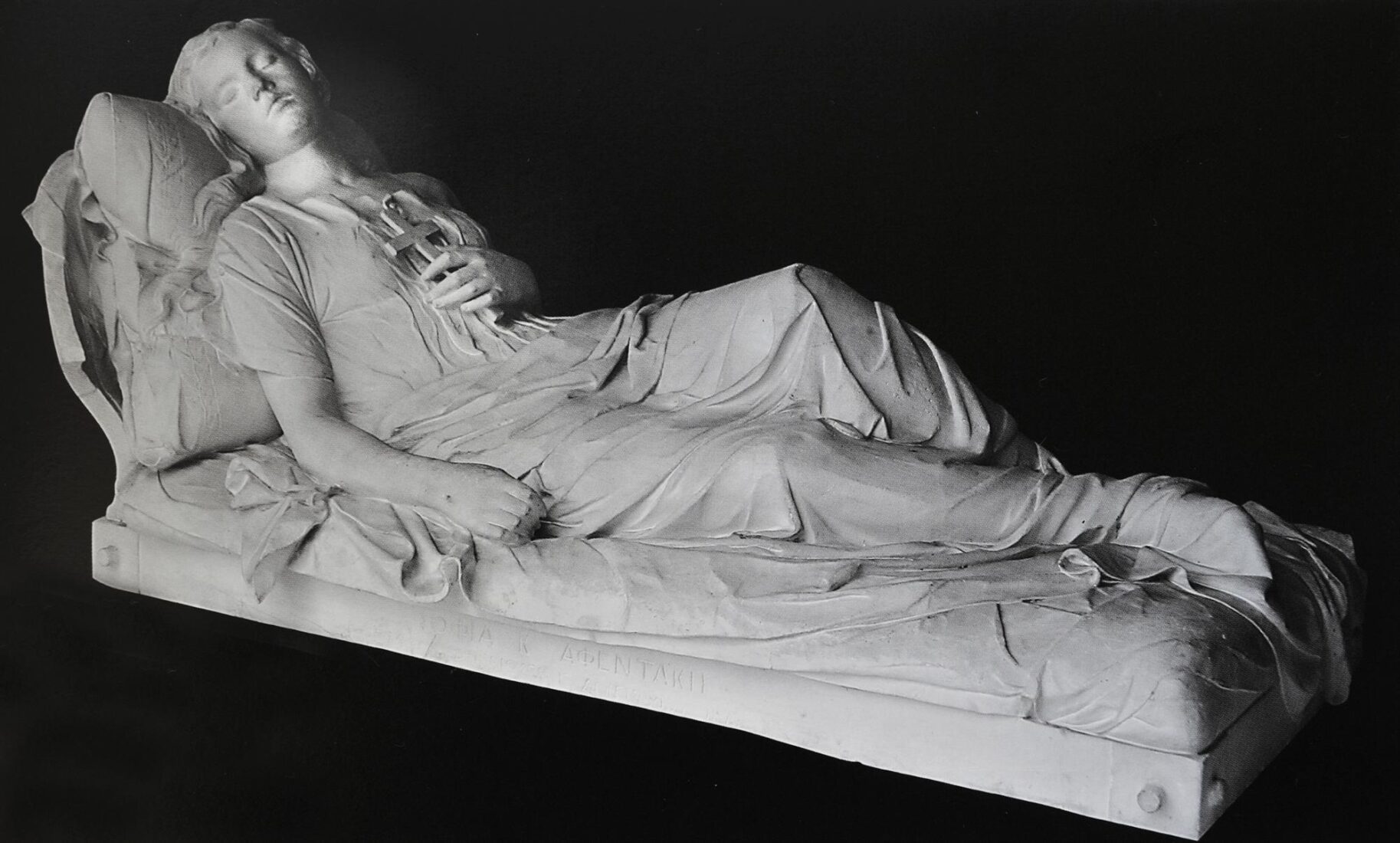We use cookies to make our site work properly, to personalize content and ads, to provide social media features and to analyze our traffic. We also share information about how you use our site with our social media, advertising and analytics partners. Read the Cookies Policy.

Chalepas Yannoulis (1851 - 1938)
Sleeping Female Figure (Plaster cast from the tomb of Sofia Afentaki in the First Cemetery of Athens), 1878
Plaster, 77 x 178 x 76 cm
Yannoulis Chalepas was a uniquely gifted artist. But his life and artistic development were marked by the manifestation of mental illness that led to confinement in a psychiatric hospital on the island of Corfu and a forty-year hiatus in his artistic production. The first symptoms of aberrant behavior presented in 1878, the same year that he completed his first body of work, referred to by historians as the “first period.”
The “Sleeping Female Figure” is Chalepas’ most widely known sculpture. The original composition was created in marble for the grave of eighteen-year-old Sofia Afentaki in the 1st Cemetery of Athens.
Chalepas based his depiction of the dead girl on the convention of the supine or reclining figure on a sarcophagus or bed. This image originated in ancient Etruria and was particularly popular in European sculpture. Chalepas, however, eschewed total rigidity by flexing the figure’s leg and slightly turning her head. The plasticity of the flesh and the different fabric textures render the work especially lifelike. The girl has a tranquil expression on her face. With her closed eyes and parted lips, she appears to be in a state of abandoned, peaceful sleep. Her pose is completely natural and the drapery folds are executed with exceptional skill. The sole feature evoking the world of the dead is the cross she holds at her breast. This feature connects the work to Greek antiquity as well as to classicistic notions. In ancient Greece, Hypnos (Sleep) and Thanatos (Death) were twin brothers. Neoclassicists saw death as an eternal dreamless sleep.
This cast of the sculpture was made in 1980 in the workshop of the National Archeological Museum. It was an initiative of the then director of the National Gallery Dimitris Papastamos and the mayor of Athens Dimitris Beis in an effort to save certain important neo-Hellenic sculptures from deterioration due to extended environmental exposure.

